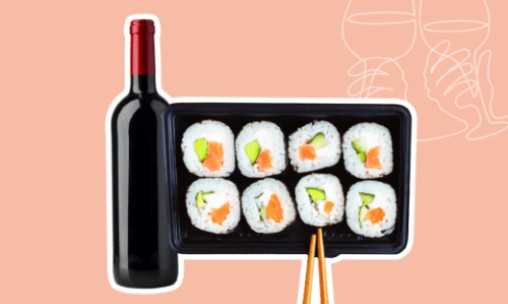Contents
Of your course.
module 1
Diploma in International Cooking and Wine
+
-
North, South, East, West, Which Food Do You Like Best?
Introduction to the International Cuisine and wine course. We will explain what to expect in the course. Our journey starts with the questions one needs to ask in order to investigate a countries traditional cuisine followed by an introduction to bottle basics from our vine vixen Julia Blaine. Demo for Thai green chicken curry
If It Walks Like A Duck…
In this lesson you will be hitting the ground running. Firstly, we discuss some history of China and Japan, the origin of the dishes and some wine fundamentals followed by 2 live demonstrations by Chef Matt so you can cook along with him. Peking duck with Mandarin pancakes - China. Gyūdon - Japan
The Wheels On The Bus
We hit Iraq and Malaysia in this lesson. We will delve into the history of these two countries and thereafter the history of the two dishes we will be cooking. Julia will of course be on hand to discuss some wine etiquette and pairing for you and finally we will cook both the Quzi and Pisang Goreng recipes. Quzi - Iraq and Pisang goreng- Malaysia
Zero's and Hero's
One well known and one lesser know dish are in store for you in this lesson. We will discuss some history about both Thailand and Cambodia and, especially where the dishes originated from. As always there will be some information on how to taste wine like a pro. Finally we end off with cooking both delicious recipes. Tom Yum Goong - Thailand and Bai sach chrouk (Pork and rice)- Cambodia
Saffron and All Those Good Things
This lesson is packed with flavour. We will discuss some history from both Kashmir and Hyderabad and then get some of the juice on the wine industry and of course we will cook two absolute classics to end off the lesson. Rogan Josh- Kashmir and Briyani - Hyderabad
Butter chicken like a boss
As always, this lesson gets straight into some interesting history from both Punjab and Western Bengal. Our wine expert gives you some wine wisdom and finally after investigating the origins of two dishes, we are going to cook Butter chicken from Punjab
Gandhi's birthplace
Today 60 % of Gujarati people are vegetarian. There are variations in cooking methods, spices used, and ingredients used that were available. Being in a dry region, Gujarat does not grow any rice but rather grains such as maize and wheat are cultivated. This is why unique types of bread like roti or chapattis feature more than rice in their traditional cuisine. The cuisine also is thought to be on the sweeter side with most dishes containing sugar in different quantities.
Alphabet Soup
This lesson explores the culinary world of Syria and Lebanon.
Grilled meats of various types along with kebabs and of course the kibbeh bil sanieh are very popular dishes in Syria. Nuts in the form of pine nuts, pistachios, and walnuts feature heavily in stuffing’s, dips, and of course desserts and other treats. Popular vegetables in Syrian cuisine include cucumbers, tomatoes, brinjal, courgette and, cabbage. Yogurt and yogurt dips are a very common addition to meals.The cuisine of Lebanon is considered to be a Mediterranean diet that features a plethora of fresh vegetables, fresh fish and seafood, fruits, starches, and a large serving of olive oil and garlic.
module 2
Intermediate in International Cooking and Wine
+
-
It all sounds like French to me
By the end of this lesson, you should be able to:
- Understand a bit of the history of French cuisine
- Be familiar with French cooking terms and techniques
- Follow the demonstration and cut the classic vegetable cuts yourself
You saucy thing you!
By the end of this lesson, you should be able to:
- Understand how to make the mother sauces of French cuisine
- Understand the classifications and differences of soups
- Follow and execute the recipe for beurre blanc sauce
Let’s Get Baked
By the end of this lesson, you should be able to:
• Understand the types of classic French bread
• Understand how to use raising agents successfully
• Follow and execute the recipe for genoise
Soft, Smooth and Tasty
By the end of this lesson, you should be able to:
• Understand the French terminology as it pertains to farci and forcemeat
• Understand the different styles for making forcemeat
• Follow and execute the recipe for a chicken galantine
The sweeter side of France
By the end of this lesson, you should be able to:
• Understand the different types of French desserts
• Understand and demonstrate how to temper eggs
• Follow and execute the crème brûlée recipe using the methods just learnt
A cut above
By the end of this lesson, you should be able to:
• Understand where different classical French butchery cuts come from and how they are used
• Grasp the method for cleaning and cooking a steak correctly
• Learn how to joint, truss and roast chicken
The Sole Purpose
By the end of this lesson, you should be able to:
• Understand the different classifications of fish and shellfish and which to buy fresh and which frozen.
• Grasp the techniques and methods used to clean, prepare and cook fish and shellfish.
• Follow the recipe and demonstration and clean and cook your catch and, prepare a beurre blanc sauce as I do.
Are you a Chef or a shoemaker?
By the end of this lesson, you should be able to:
• Follow and execute the recipe for brioche using a variety of techniques learned in this course.
• Follow and execute the recipe for a classic and authentic bouillabaisse.
• Follow and execute the recipe for a Grand Marnier souffle.







